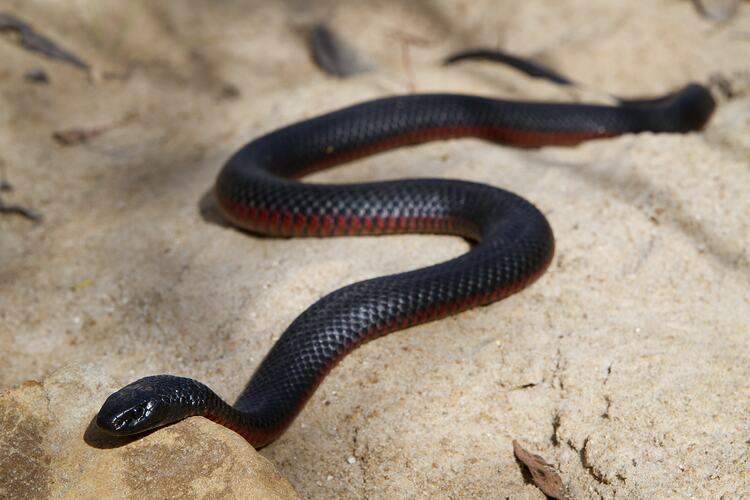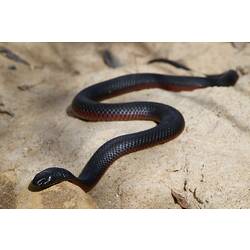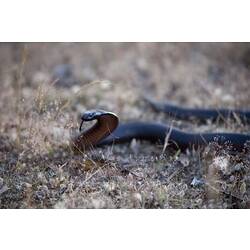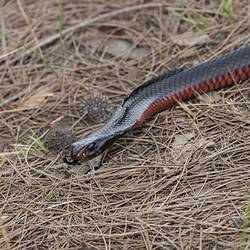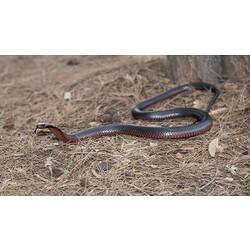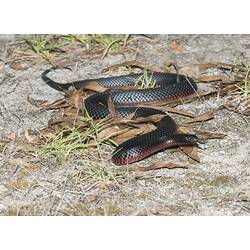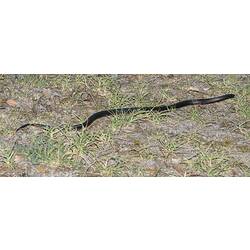General Description
Body black and shiny, underneath red to white often extending along the side. Up to 1.7 m long.
Biology
Red-bellied Black Snakes are active during the day. They are usually associated with waterways but sometimes ranging well away from these areas. During the breeding season, in spring, males compete with one another for females. The females produce up to 40 live young when they give birth. Feeds mostly on frogs but also eats reptiles and small mammals. Usually not aggressive but may strike if provoked.
Distribution
Eastern Australia from far northern Queensland to New South Wales, Victoria and south-eastern South Australia.
Habitat
Usually found foraging under rocks or timber in the vicinity of creeks, swamps, rivers or lakes.
More Information
-
Animal Type
-
Animal SubType
-
Brief Id
Large shiny black snake, bright red on the underside.
-
Colours
Black, Red, Pink, White, Brown
-
Maximum Size
1.7 m
-
Habitats
Forest, Woodland, Grassland, Lakes, Coastal, Rivers, Wetland
-
Diet
Carnivore
-
Diet Categories
Frogs, Reptiles, Mammals
-
Hazards
Potentially lethal bite, venom is toxic to humans.
-
Endemicity
-
Commercial
No
-
Conservation Statuses
CITES: Not listed, FFG Threatened List: Not listed, EPBC Act 1999: Not listed, IUCN Red List: Least Concern
-
Taxon Name
-
Scientific Author
(Shaw, 1794)
-
Common Name
Red-bellied Black Snake
-
Kingdom
-
Phylum
-
Subphylum
-
Class
-
Subclass
-
Order
-
Suborder
-
Superfamily
-
Family
-
Genus
-
Species Name
porphyriacus
